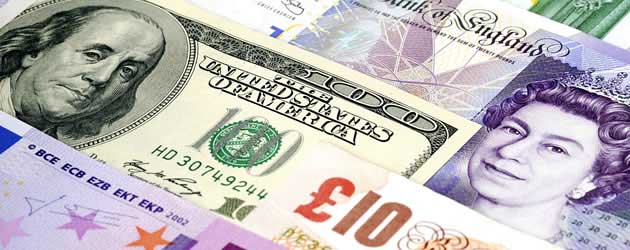
The Pound to US Dollar exchange rate sunk to a fresh 31-month low of 1.4986 (GBP/USD) on Friday afternoon as strong US Manufacturing data combined with surprisingly poor UK Factory Output figures sent Sterling tumbling against the ‘Greenback’.
As markets opened for the new week of trading the Pound continued to trade at very weak levels against the US Dollar, with GBP/USD hovering just above the psychologically significant 1.5000 mark.
Traders are selling Sterling due to the latest Manufacturing PMI result, which showed that the UK Manufacturing Sector shrunk during January. The figure declined from a minor expansion of 50.5 in January to a severe contraction of 47.9 in February. The PMI was expected to show a mild improvement, with analysts forecasting a score of 51.0.
The disappointing PMI print renewed fears that Britain could be slumping into an unprecedented triple-dip recession. The fragile Manufacturing Sector accounts for around 10% of the UK economy; it reduced economic output by around -0.1% during the fourth quarter of 2012 and a similar score this time around could send the UK into its third recession since the financial crisis of 2008.
Investors interpreted the soft data particularly negatively because it featured a protracted fall in New Orders to 46.6, which indicated that further declines could be possible for Britain’s Manufacturing Industry. Chris Williamson of Markit Economics, who compiled the report said:
“The return to contraction in the Manufacturing Sector is a big surprise and represents a major setback to hopes that the UK economy can avoid a recession. A strong rebound is needed in March to prevent the Sector from acting as a drag on the economy as a whole in the first quarter”.
The Pound received a vicious pummeling on Friday right across the currency market, with Sterling nose-diving against the Euro, the Canadian Dollar, the Australian Dollar, and the New Zealand Dollar. In reaction to the Manufacturing report, GBP/EUR shrunk by -0.9 cents, GBP/CAD shot down by around -2.0 cents, GBP/AUD declined by -1.0 cents, and GBP/NZD plunged by -2.0 cents.
The US Dollar is benefitting from recent domestic data: US ISM Manufacturing printed at a 20-month high of 54.2, Prices Paid increased to 61.5, the Personal Spending inched higher to 0.2%, and the University of Michigan Confidence Survey improved to 77.6. Usually, strong US data damages the US Dollar because it reduces demand for the safe haven qualities that the Greenback possesses. But at the moment the Greenback is responding well to positive domestic data because it is seen to reduce the need for the Federal Reserve to continue with its $85 billion a month quantitative easing scheme – which reduces the value of the Dollar.
Conversely, the US Dollar is also absorbing defensive inflows in relation to the ‘sequester’ of spending cuts. Some analysts predict that the $1.2 billion of spending cuts that came into effect over the weekend will knock-off -1.0% from America’s Gross Domestic Product this year, as reductions in government spending could lead to heightened unemployment. Some other economists feel that the mass spending cuts will not have such a sharp effect on economic growth because they are set to be carried out over the next nine years.
However, the uncertainty caused by the huge set of cuts is having a negative impact on risk sentiment. The United States is the world’s largest economy and when the US slows down, so does the global economy, which reduces the demand for riskier-assets and subsequently improves demand for the safe haven US Dollar.
The Pound to US Dollar exchange rate could be susceptible to further dips below 1.5000 this week if the Bank of England announce any additions to their current asset purchasing target of £375 billion. Last time out the Monetary Policy Committee voted 6-3 against more quantitative easing, but with BoE Governor Mervyn King stating that further monetary policy could be employed to boost the UK’s grim growth prospects, there is every chance that it could be announced as early as Thursday.
Sterling is also vulnerable to the release of data from the Construction Industry and the Service Sector. Britain’s dominant Services Sector accounts for around 70% of economic output, so a soft result in this index could be especially damaging to the Pound.

Comments are closed.